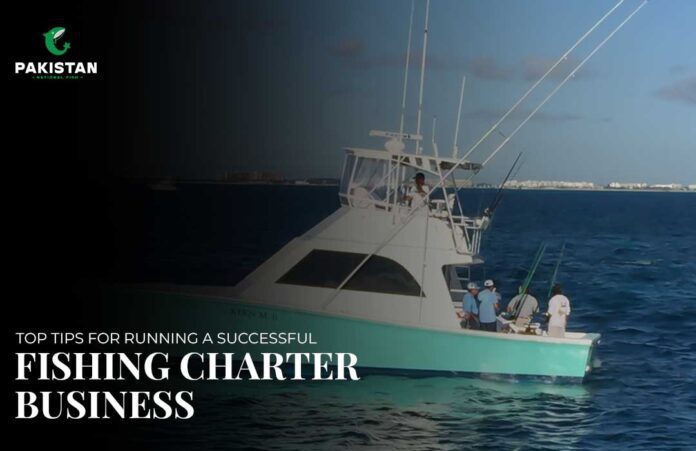The fishing charter business has been stretched to record heights and its clients include tourists, sports fishing enthusiasts as well as residents. Running a fish market, however, is not as simple as loving to fish, it calls for professionalism in service delivery, the realization of business opportunities, and most importantly legal compliance.
To establish a successful point of sale, the operators have to devote attention to multiple major factors that can influence the overall outcome, firstly, learning the audience, increasing brand recognition, establishing an online presence, and others.
Continuing below are some of the most effective tips that can help Fish Charter to achieve a more successful business:
1. Understand Your Target Market and Audience
Demographics of the audience are crucial to your business since you must know your target customers. What type of fishing does the client want that is for expert fishers or for those who only want to have a peaceful fishing experience? Thus, identifying your target market narrows down your services too.
- Identify Your Ideal Client Base: Determine who your target market is; whether it is tourists, local interest, or niche guests, and design the trip according to their preference.
- Research Competitors: If you can, compare yourself to the other charters nearby and check what kind of factors they have that are giving them success. Search for opportunities that exist in the market that you can cover, for instance, segments of the market as well as extra services that can be provided.
- Set Transparent Pricing: clearly explain from the charter what is included (equipment, license, snacks, etc) and what is charged extra (fishing cleaning or special equipment).
- When understanding your target customers and set just the right price, people will trust you and turn to the kind of experiences they want.
2. Invest in High-Quality Equipment and a Reliable Boat
No fishing charter can begin without a good, properly equipped boat and sustainable fishing equipment. Your boat is your portfolio for your business, therefore, it has to be durable, comfortable, and adequately spacious to accommodate your clients’ fishing tasks. That way there are very few breakdowns and safety is always considered.
- Choose a Comfortable, Reliable Boat: Choose a ship perfectly fitting the type of charter you are providing, always maintaining enough space, and all the requirements.
- Use High-Quality Gear: High-quality fishing gear lasts longer, minimizes such mishaps/ incidences, and makes the fishing experience compatible with the fishing abilities of the beginner and the professional fisherman.
- Prioritize Safety Equipment: Make sure the boat has life jacket(s), first aid kit(s), and emergency signaling equipment handy and your crew is knowledgeable of all safety measures. Quality and safety investments create a better image and outcome, therefore satisfying the clients.
3. Improve Customer Satisfaction with Clear Communication
Customer satisfaction is a top priority in this kind of business. Going further than focusing on serving customers to catch fish try to make it more unique with a friendly and informative staff.
- Engage and Educate Clients: Educate the public on facts about ecology, sea life, and fishing methods during the trips.
- Be Clear and Transparent: Introduce facts about a trip including units to be covered, things clients should bring with them, and any other limitations.
- Go the Extra Mile: If one can go over and beyond, things like supplying some drinks, and taking photos can count a lot and make clients book your space again.
Addressing the customers with passion and effectively creates a good image and client loyalty will follow in the future.
4. Stress On Safety Measures And Regulation Measures
5. Develop A Positive Web Presence
In today’s society, having a functional website plays an obvious role in the success of any fishing charter company. Begin with having a professional-looking website that contains information on the services you offer, your charges, and any option for scheduling. Well-taken pictures of your boat, the latest catches, and the lovely sceneries are useful in letting the clientele services know what to expect, while a blog that focuses on fishing techniques, facts about the fish found nearby or success stories would help in drawing web traffic to them.
To promote services, products, and equipment it is crucial to use the internet and especially social networks such as Instagram, Facebook, and YouTube. Sharing of interesting content with high frequency will attract followers hence making it easy to post to other new customers. Where possible, ask clients to leave feedback.
6. Develop Alliances With Neighborhood Companies
By introducing this charter to local facilities such as hotels and resorts, as well as other companies, one can expand the visibility of one’s charter and attract more customers to it. Some of the mutual strategies are associated with packaged deals with accommodations for clients, which often may seem very attractive and all-embracing for them.
- Partner with Hotels and Tour Agencies: Partnering with Nearby Businesses will help in capturing tourists looking for complete holiday packages.
- Join Local Associations: Communication with the fishing and tourism associations enables one to learn more about the current trends in your fishing and tourism industries and even work with fellow fishers.
- Engage in Community Events: Sponsoring or participating in local events and conservation-related activities also the image of your business. Partnerships help to foster better relations in the community and also help to introduce your charter as a legitimate local business venture.
7. Emphasis on Business Metrics and Finance Management
Operating a charter business is not just a matter of handy fishing; it also has an aspect of accounting and evaluating performance.
- Track Revenue and Expenses: Take detailed records of your financial expenditure comprising of maintenance charges, wages of drivers/truck operators, and costs on fuel and many others to be in a position to identify your balances between costs and income for a wiser financial decision.
- Monitor Key Performance Indicators (KPIs): Keeping indicators such as customer satisfaction rates, repeat bookings, or overall marketing effectiveness helps work on services.
- Plan for Off-Season Revenue Streams: One must come up with ways of turnover during low-demand season like changing the kind of trips being offered including sunset voyages or historical sightseeing trips. Some of the benefits of good financial management is helps to expand the business and make profits all year through.


